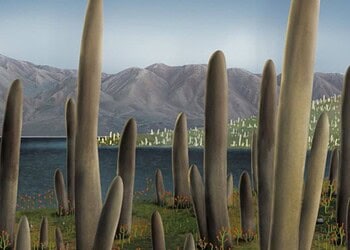Trees planted along a city street could screen residents from sun and noise – but more importantly, they can also protect them from the polluted air. A new study has shown that tree leaves can capture more than 50% of the polluting particulate matter – the main source of urban pollution and a trigger for disease.

In cities, this type of pollution mostly comes from car exhaust, brake pad wear, and road dust, but it can contain dangerous substances, such as iron and lead. The Environmental Protection Agency classifies particulates depending on size, but virtually all particulates are small enough to be inhaled. Researchers wanted to understand exactly how trees capture this pollution and how they can use this mechanism to our advantage. However, modeling this process is extremely challenging because air flow and particle movement on a street follow complex fluid dynamics.
Barbara A. Maher and her colleagues at Lancaster University, in the U.K., wanted to get some numbers from a real-life situation, so they moved from the lab to the street – analyzing row of eight houses without any trees screening the air. They tracked the amount of dust and particulate matter entering two of the houses as controls and then also used dust monitoring devices to gather data for every 10 minutes for five days. They also used simple wet wipes to gather dust from LED or plasma television screens inside four houses and tested them for metal concentrations.
After they had their initial data, they planted a screen of 30 young silver birch trees in wooden planters in front of four of the houses, including one of the control houses, for 13 days and then gathered data using the exact same techniques. Their results showed 52 to 65% lower concentrations of metallic particles and an overall 50% decrease in the quantity of polluting particulates in the houses.

Credit: Environ. Sci. Technol.
Then, they analyzed the birch leaves with a scanning electron microscope and confirmed that the trees indeed captures the missing pollution. However, it’s still unclear what the trees actually do with it – it can be estimated that at one point or another it reaches the soil, and while that isn’t exactly good either, it’s pretty much the best thing you can do in terms of common urban pollution.
Interestingly enough, oysters do something similar in the marine environment – they’re filter feeders and get a lot of the sediment out of the water, leading to cleaner, clearer water. When the Europeans first came across the Atlantic the Chesapeake bay had so many oysters that the bay was described as crystal clear! As any local or visitor probably knows, that’s really not the case nowadays. Needless to say, just like with trees in most cities of the world, oyster populations are also dwindling – a worrying fact, considering the beneficial effects they have.
Journal Reference:
Barbara A. Maher *, Imad A. M. Ahmed , Brian Davison , Vassil Karloukovski , and Robert Clarke – Impact of Roadside Tree Lines on Indoor Concentrations of Traffic-Derived Particulate Matter. Environ. Sci. Technol., Article ASAP. DOI: 10.1021/es404363m






